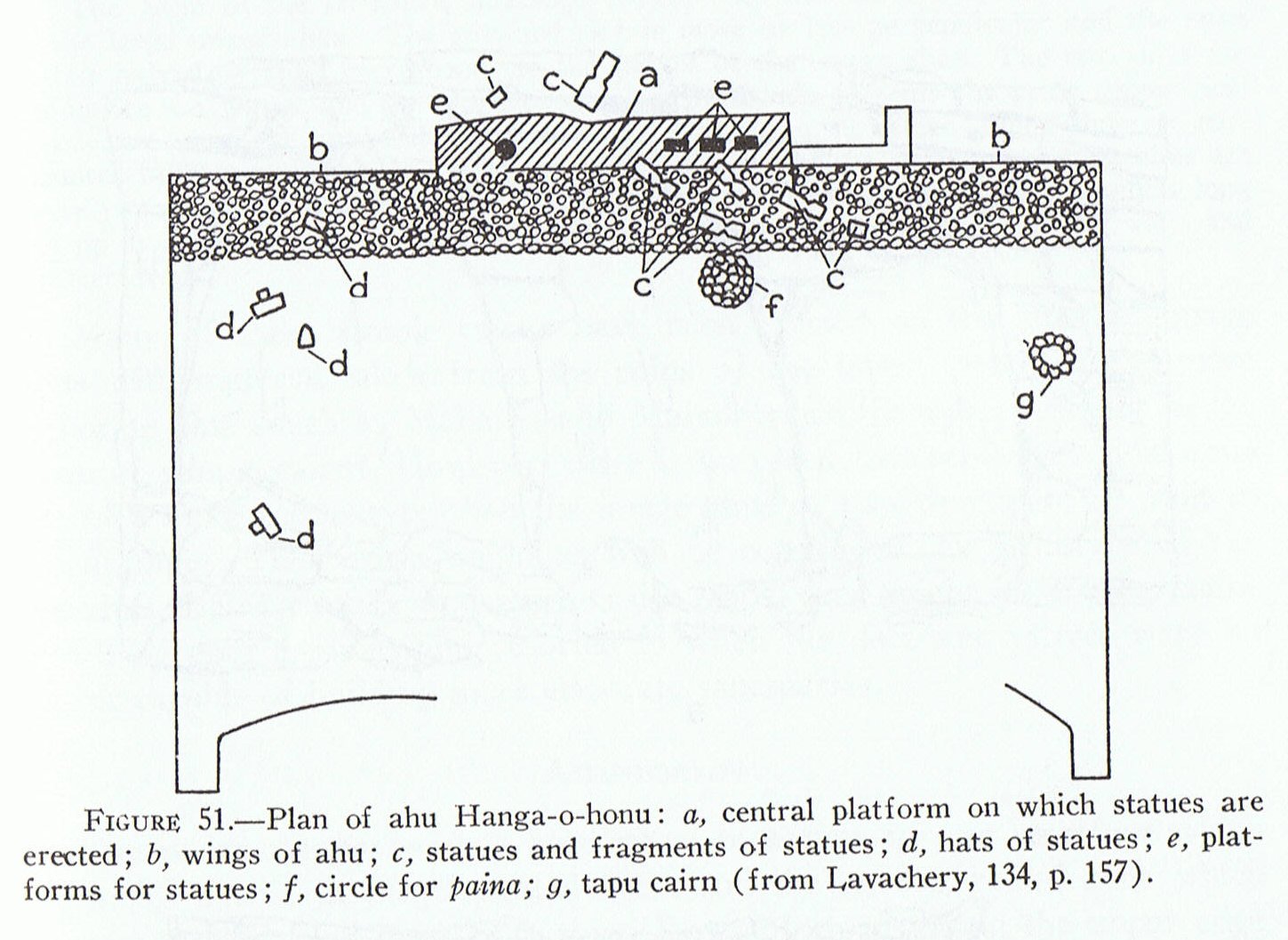| A tahua
is, it seems, a kind of plaza for gathering the people: Ahu Haga O Hônu:
"... The central portion of this wall projects outward towards the sea to form a platform or stage on which the statues were erected. This salient corresponds to the body of the ahu and the two lateral walls may be considered the wings. A little below this stage the main body of the construction, made of piled-up stones, slopes inland, extending into a long, slanting surface (tahua) which stops at a low row of slabs. The approach to the slope is sometimes paved with big boulders which continue onto the large surface (tahua) ..." (Métraux)
When king Hotu Matua arrived with his double-canoe to the southeast corner of the island - legend says - the lashings were liberated and he took the righthand way around Poike to land at Anakena, while the other canoe (with his sister Ava Rei Pua onboard) took the lefthand (shorter) way to Anakena:
The name Tahua for the rongorongo tablet A presumably alludes to the landing place of Ava Rei Pua. At the beginning of the text (i.e. the first line on side b) we can see glyphs representing birth:
The first glyph has the function to inform where to begin the reading (on side a or on side b) and the second glyph shows light emanating from a new moon crescent. |
